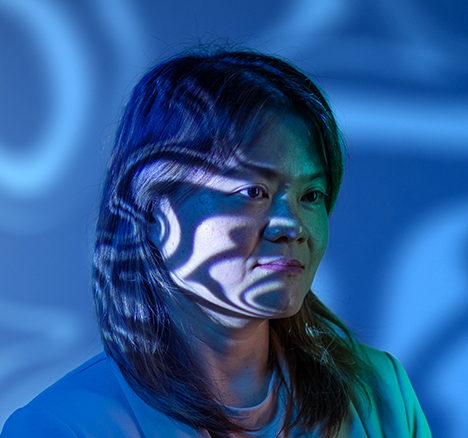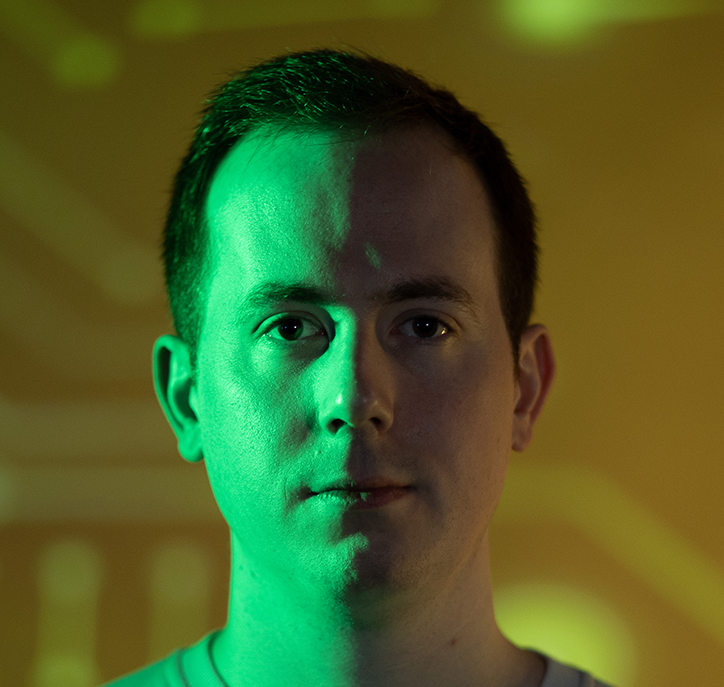ALJAWHARAH ALSHARIF
on a
mission
to make wearable tech sustainable.
Aljawharah Alsharif
Ph.D. student, Electrical and Computer Engineering.
Computer, Electrical and Mathematical Sciences and Engineering
Octopuses have three hearts, but it is their eight arms, with their strong yet gentle suction cups, that captured Aljawharah Alsharif’s imagination for kindness.
Today, as a Ph.D. student at King Abdullah University of Science and Technology (KAUST), the Jeddah native is turning her fascination with the sea creature into innovation, developing octopus-inspired medical patches that cling to skin and deliver accurate signals for healthcare monitoring.
“It’s really cool to be inspired by nature and build something in the lab that mimics what we see around us,” Alsharif says, recalling how her father used to take her to sea for days, sparking her imagination as a child. “Later, reading articles on bio-inspired design fueled the ideas further,” she adds. “To come up with something that enhances people’s well-being is very motivating for me.”
It’s really cool to be inspired by nature and build something in the lab that mimics what we see around us,
Aljawharah Alsharif
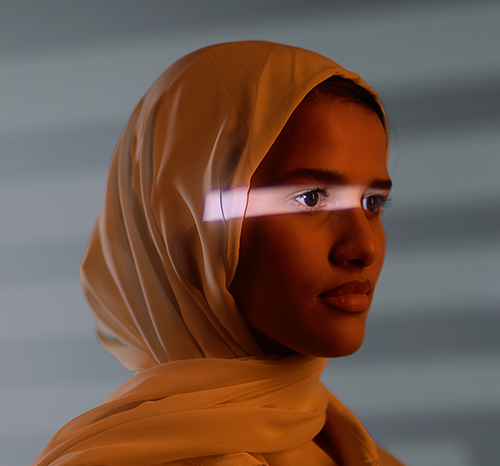
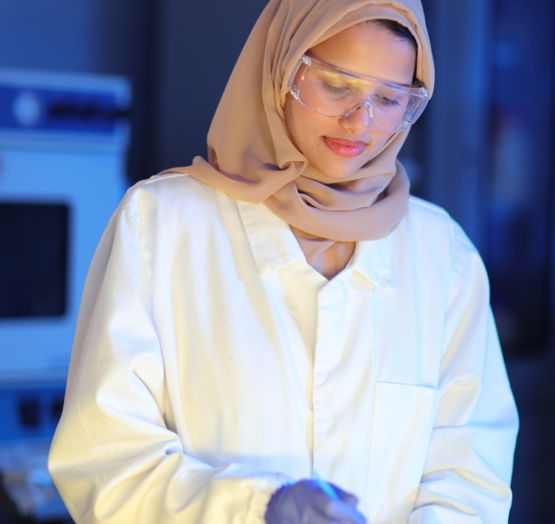
Millions worldwide suffer from chronic illnesses that require adhesive patches using chemical glues, Alsharif explains. Over time, those adhesives can cause rashes, blisters, or other injuries. They also do not last long. “Current market patches use chemical adhesives and special gels to enhance signal measurement, but the gels dry out within a day. This causes the measurement signal to degrade quickly.”
Working with fellow researchers at KAUST’s Smart, Advanced Memory Devices and Applications (SAMA) Laboratory, the electrical and computer engineering student says her patch has proven itself in the lab. With hospital collaborations and clinical trials now paving the way for market applications, she is optimistic about the future of this octopus-inspired technology. “As a healthcare engineer, I want to solve problems that make life better for people.”
WATCH VIDEO
Aljawharah Alsharif
Octopus blueprint
Recreating octopus suckers as medical patches requires the right mix of smart polymers and a lot of tiny suction cups, Alsharif says. “The patches we’re designing are covered with micro-skin suckers, up to thousands of micro-suction cups within one patch.”
The SAMA team uses biocompatible and biodegradable materials that interact with the human body and change shape once triggered by external stimuli such as body heat. Alsharif notes the design captures reliable readings for up to a month, and each patch can be used up to 10 times, removed, washed, and reapplied without losing effectiveness.
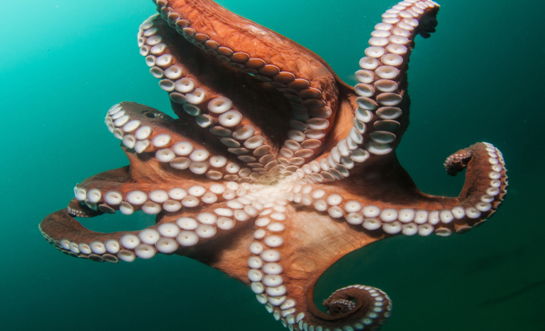
“Commercial patches are basically one flat surface of glue that attaches to the skin. Ours is a micro-engineered system,” she says. “The challenge is that we’re building multiple layers. It’s micro-suction cups with micro-grooves to allow the patch to breathe, with liquid diodes that transfer the sweat in specific directions. It’s multiple layers of engineering technologies.”
It is painstaking work, she adds, but the result is an award-winning medical solution that can compete with today’s adhesives while offering a better patient experience.
Eye to the future
Entrepreneurship is a growing passion for Alsharif. The ambitious researcher aims to create a KAUST startup around her unique, nature-modeled dry-patch technology.
“I’ve been taking courses on a personal level. I also participated in one of KAUST’s programs, ShenTech Bootcamp, in 2024,” she says. “They gave us background on how to translate a product. We saw the supply chain. We were introduced to so many suppliers in China. It was really impressive and exciting.”
Ultimately, Alsharif is not as concerned about academic publishing as she is with turning her Ph.D. project into something people can use. She says all her work is in service of others.
“Patients deserve kinder, safer wearables. If this patch reaches people with chronic conditions who rely on these devices daily, I’ll be deeply fulfilled. They deserve technology that’s soft, sustainable, and feels like a second skin.”
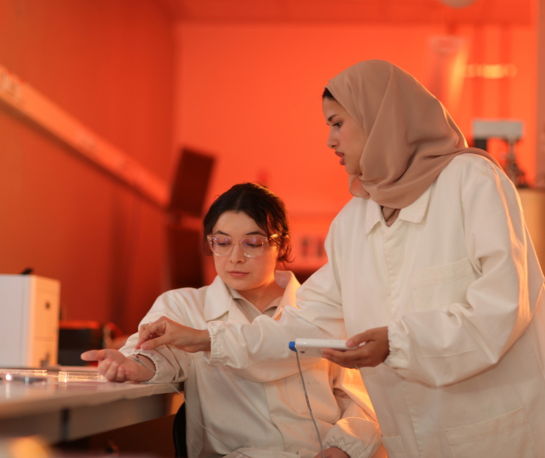
In the long term, Alsharif sees her patch being used in clinics and hospitals but not being limited to them. “It can expand into many fields. Anything that needs adhesive properties could use this octopus-inspired patch. It could even go into cosmetics, replacing silicone wrinkle patches. Inshallah, I hope it will reach far beyond medical use.”
To come up with something that enhances people’s well-being is very motivating for me."
Aljawharah Alsharif

Learn more about KAUST and our mission-driven research
KAUST shall be a beacon for peace, hope and reconciliation, and shall serve the people of the Kingdom and the world.
King Abdullah bin Abdulaziz Al Saud, 1924 – 2015
Email: global.pr@kaust.edu.sa
Mailing address:
4700 King Abdullah University of Science and Technology
Thuwal 23955-6900
Kingdom of Saudi Arabia
FOLLOW US
© 2025 King Abdullah University of Science and Technology. All rights reserved.


